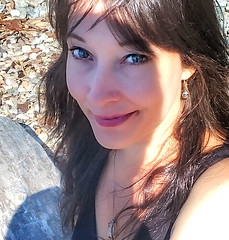
Water colour pencil Crayons are my favourite method of adding colour to line images. To be honest, I prefer Rexel Derwent artist's pencils to Stamping up--for one main reason: you can pull more colour off with the Derwent pencils when you add water and that gives a more painterly effect. ETA: What I mean is that--with the Derwent pencils--after you fill all the colour in with pencil, it actually lets you pull off a little colour and show the paper underneath (when you apply water.) In contrast, with the Stampin Up ones, the paper was kind of stained--the pigment wouldn't pull off the same way.
However, I may be just heavy handed with the Stampin Up ones, because I've used the Derwent for many years. Try building up colour with lighter pressure if you have the Stampin up ones. I must admit, SU's pencils are much more affordable & actually have the matching colours. To get the matching SU colours, you'd have to buy the Derwent 72 pencil set at 100.00 or more. SU's set of 27 is just $27.95.


Note: Below is an example of different sketch techniques you can use. All of these except "smooth ovals" leave a bit of textured look to your work. The softer you press the easier it will be to erase the penciled look. I personally LOVE a bit of that sketchy look though. This photo below shows the sketch techniques after the water:



Leaving some white/light areas creates interest. The best way to do this is to work from light to dark penciled areas. (Your brush will pick up pigment as it moves along.) For instance with the balloon, I started at the top and worked my way down, then I removed a little pigment off the brush & blended the middle area in. This is handy for removing pigment to make lighter areas. If you are trying to lighten, be sure to clean your brush. (I use the back of my hand for removing excess colour, since it helps me work quickly.) If you make a mistake and go over the line, you can clean your brush quickly and go back in with water. It is a very forgiving medium in that way. The squirrel's face in this picture above shows the result of my favourite brush technique for adding pigment: When blending the middle areas, I like to use a pouncing or stippling motion to get rough natural deposits of left over colour instead of lines. Left over pigment on your brush is also a great way to get into areas your pencil couldn't reach. If you want a finer tip roll your brush along the back of your hand until you can see that it is less spread out.
The squirrel's face in this picture above shows the result of my favourite brush technique for adding pigment: When blending the middle areas, I like to use a pouncing or stippling motion to get rough natural deposits of left over colour instead of lines. Left over pigment on your brush is also a great way to get into areas your pencil couldn't reach. If you want a finer tip roll your brush along the back of your hand until you can see that it is less spread out.
As I said earlier, go ahead and add more pencil after it is dry. I like the grainy softness of pencil added on top of water-coloured images and not watered down a second time. If you look closely at the balloons & hearts, you can see the effect of adding more pencil sans water:
Thanks for stopping by,
:0) Mel
Friday, November 30, 2007
Tips for using Watercolour pencil Crayons
Posted by
mel m. m. mccarthy
at
6:59 AM
![]()
![]()
Labels: techniques, Tutorials
Subscribe to:
Post Comments (Atom)
















7 comments:
Hi from a new member of SBS2!
What wonderful coloring - and a great tutorial too.
Looking forward to getting to know you and seeing more of your work.
I loved the squirrel card. Looks so darn elegant. The embossed patterns look so rich....LOVE IT!!
Thanks for the great tut, "Sister".
Greetings
Tina
Oh this is great! What does this mean though: you can pull more colour off with the Derwent pencils.
Thanks for the tutorial. I've always wanted to learn how to paint better. I might just trying something this week. I'll let you know if I do :D
Ya, I guess that's not so clear about the pulling the colour off. What I mean is that after you fill all the colour in with pencil, it actually lets you pull off a little and show the paper underneath (when you apply water.) In contrast, with the Stampin Up ones, the paper was kind of stained--so the pigment wouldn't pull off the same way. (If I'm still makin' no sense let me know) ;0)
Mel
Great tutorial! I love the Derwent pencils too - I haven't used the SU ones, only the Prismacolor ones, and the Derwents are definitely the best - creamy color and they blend so well. You can see some of my watercolor work at http://mamadinis.blogspot.com...love to have you visit!
Dina
I am so glad I found your blog, you are so creative. Loving your blog.
Post a Comment